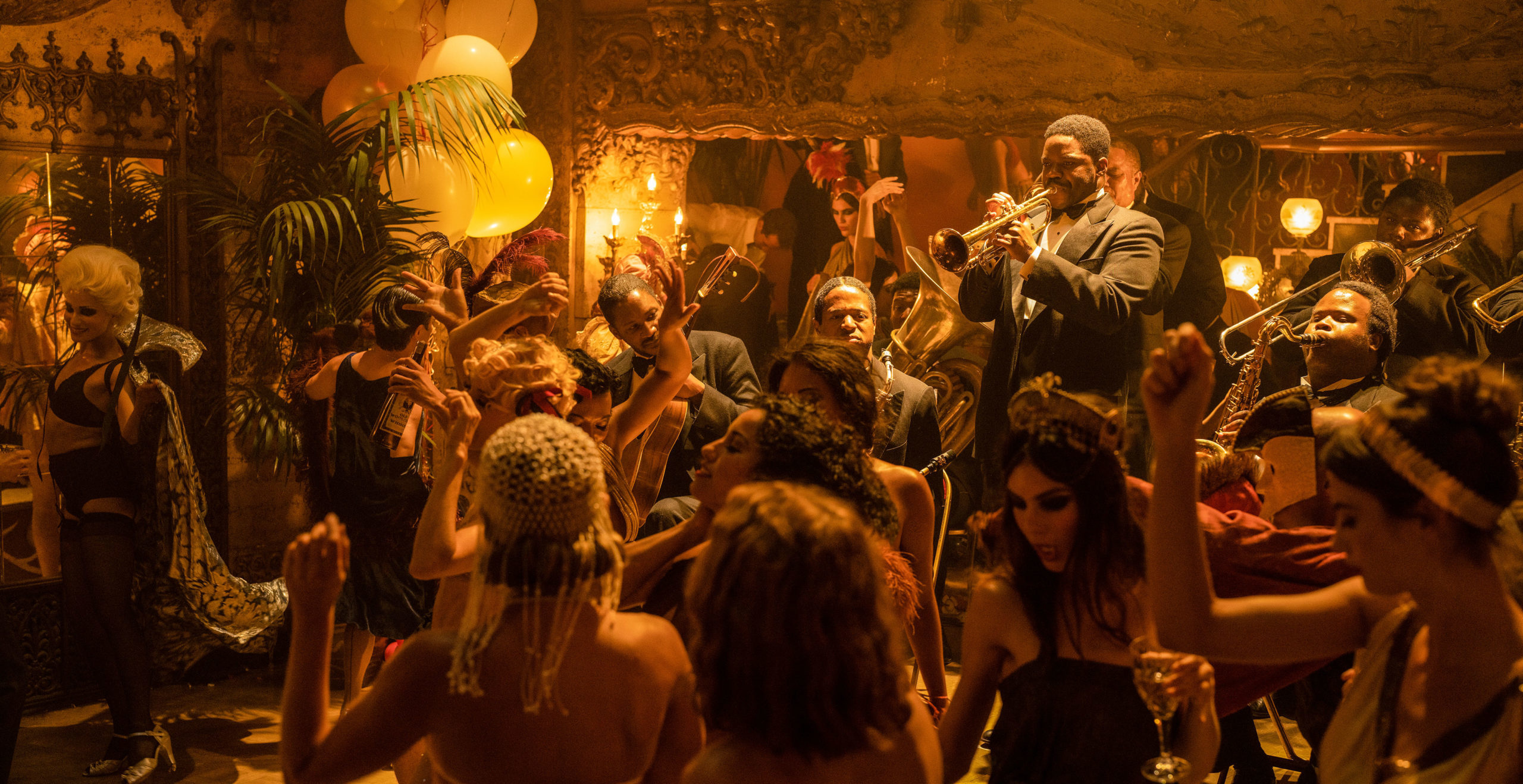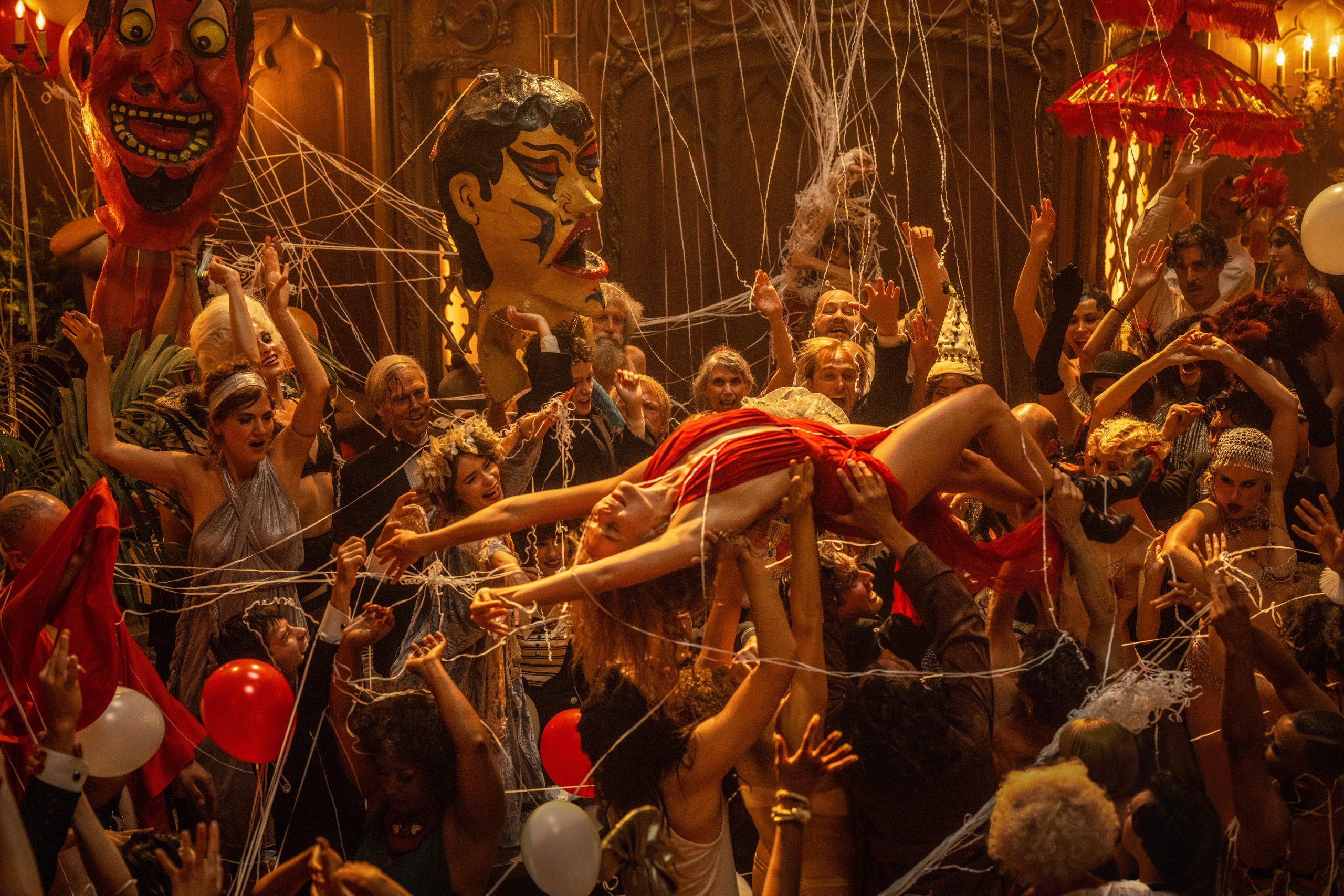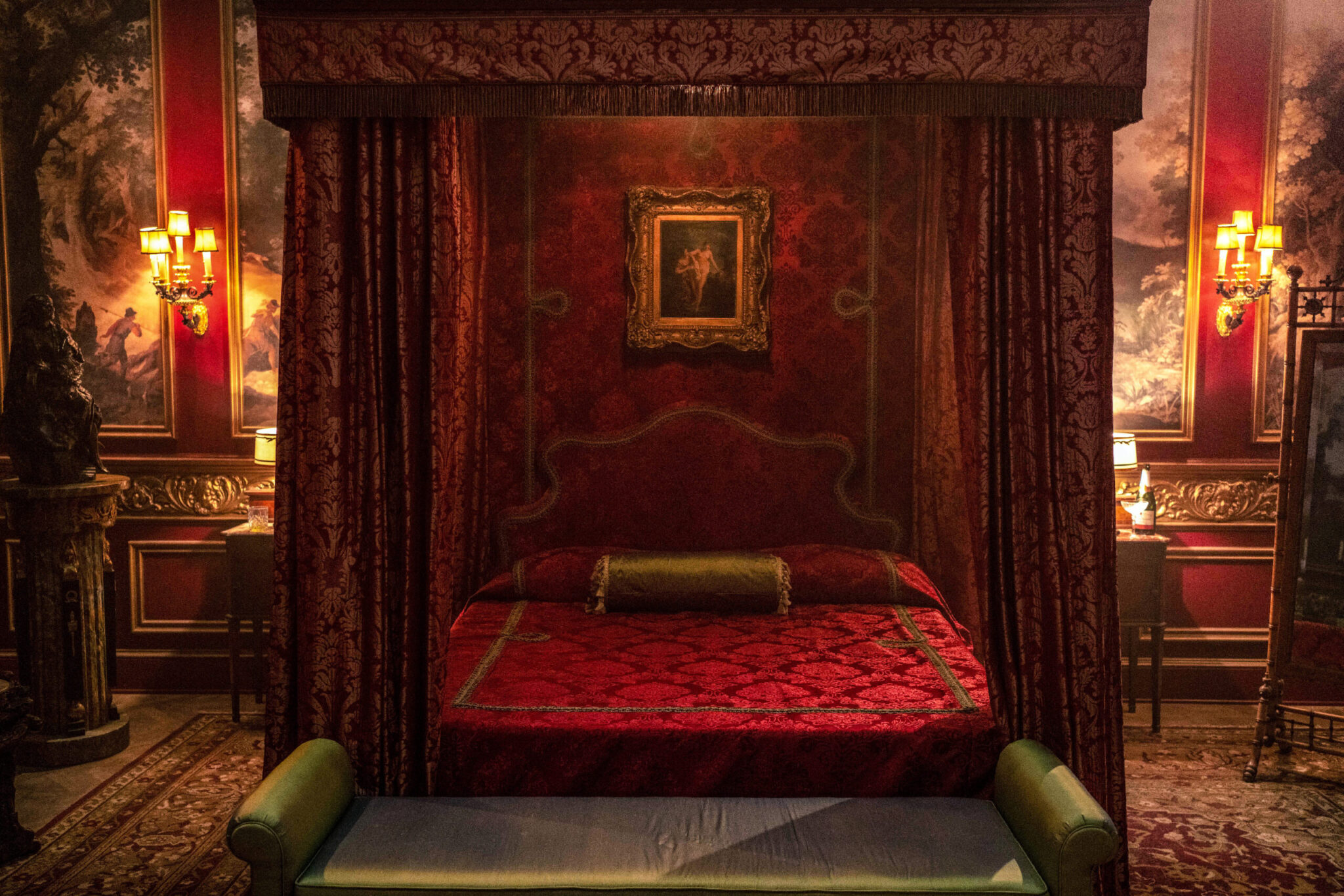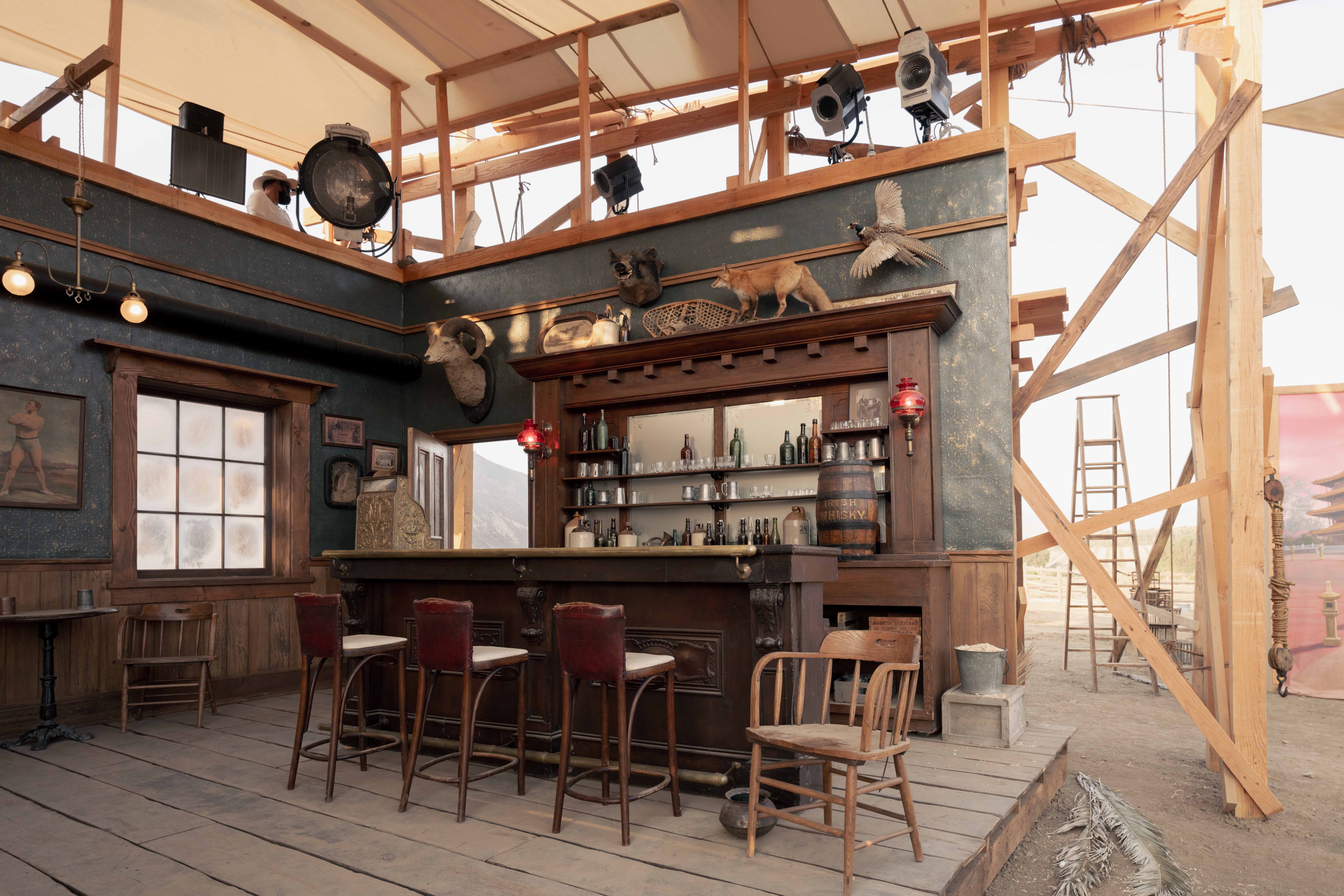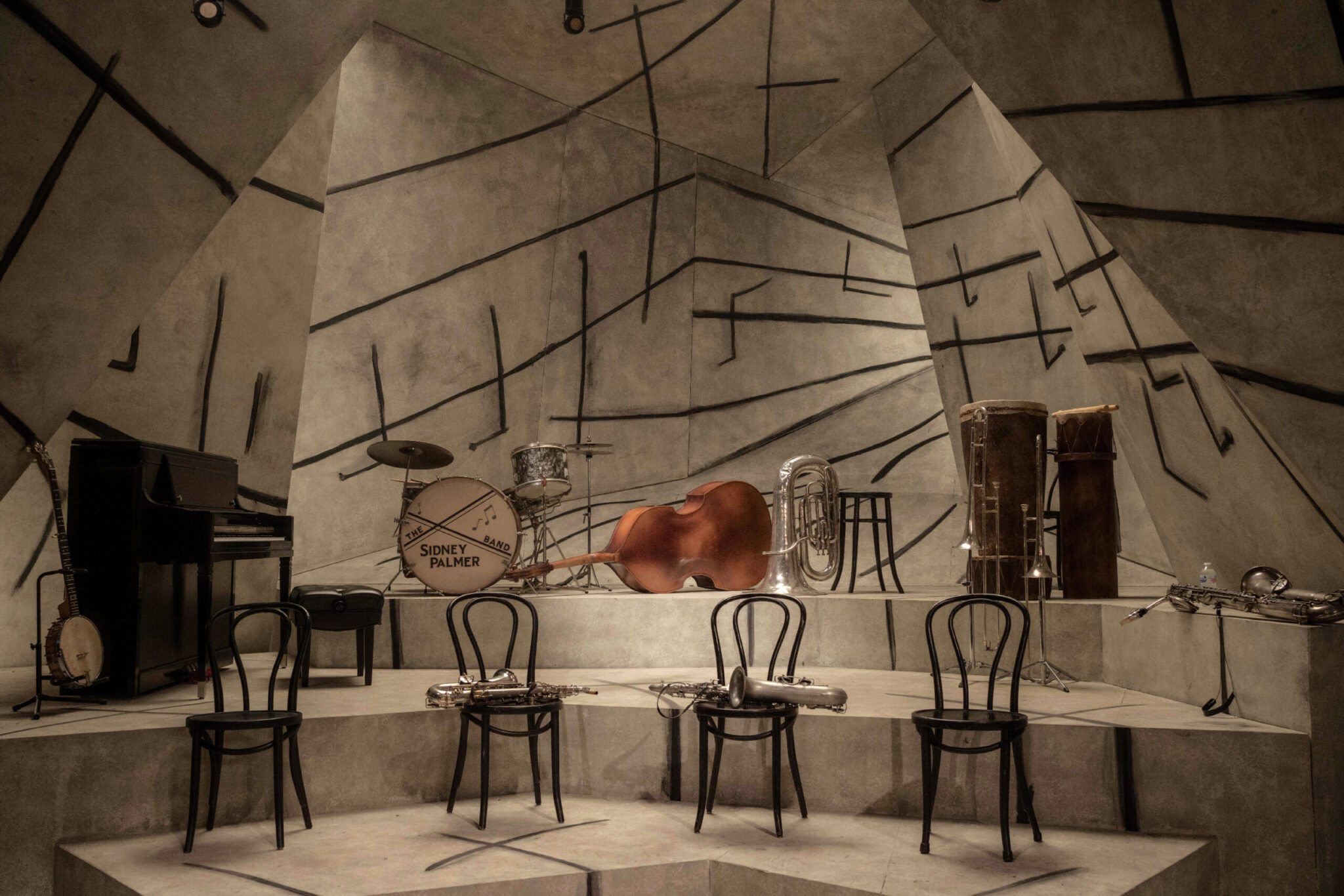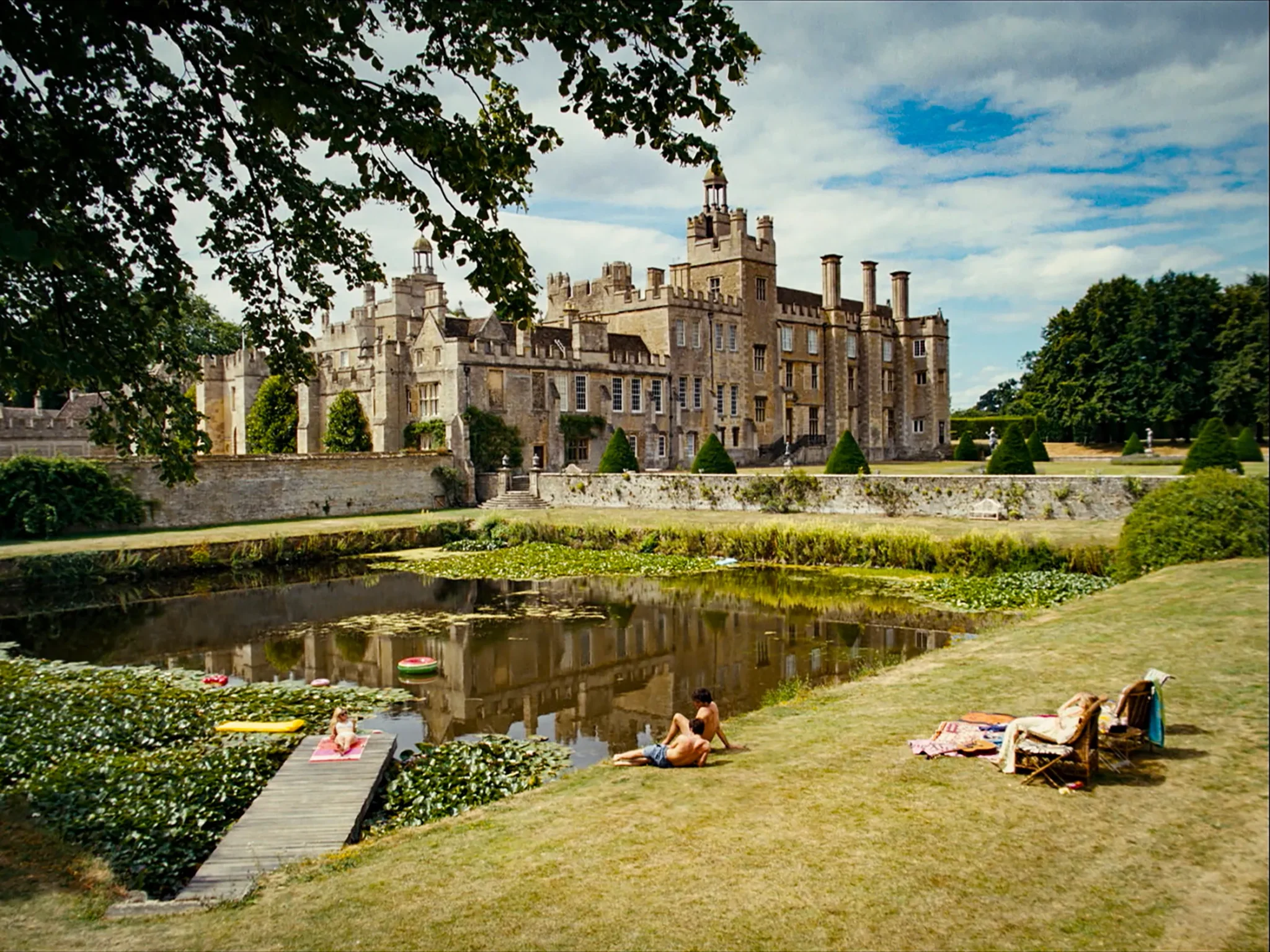The mid-1920s sets the backdrop for Babylon, the new period comedy/drama from Oscar-winning director Damien Chazelle (La La Land). It’s the Golden Age of Hollywood—the industry’s heady, hedonistic days when budding actors flocked to the land of dreams, hoping to see their names in lights and to partake in the excesses of the rich and famous. At the same time, the industry is in a state of flux as it faces the challenges of moving from silent films to “talkies.”
Babylon chronicles the rise and fall of handsome silent-film matinee idol Jack Conrad (modeled after the likes of Gary Cooper and Clark Gable, and played by Brad Pitt) and aspiring stars Nellie LaRoy (Margot Robbie) and Manny Torres (Diego Calva). Other era archetypes include Hedda Hopper–style gossip columnist Elinor St. John (Jean Smart) and mob boss James McKay (Tobey Maguire).
For production designer Florencia Martin, recreating 120 locations in her hometown of Los Angeles was both a dream and a monumental challenge. The film begins with a raucous studio “party of the year” set in an abandoned castle on Elizabeth Lake. Known as “Shea’s Castle,” it was the work of Richard Peter Shea, who developed Hancock Park. “He built this castle in the middle of the desert and would fly out his guests, pick them up by burro or horse, and bring them up to the castle with this encompassing view of the land,” says the Emmy-nominated designer, whose recent films include Licorice Pizza and Blonde. Luckily, the castle is still standing, and even has its original hardware and flooring.
The gilt-laden Ace Hotel Downtown Los Angeles subbed in as the castle’s ballroom. Dripping in Spanish Gothic details, “it had this amazing contrast to the beautiful, barren 360-degree landscape of the exterior castle,” notes Martin.
The design process involved extensive sourcing of antiques and lighting from the Warner Brothers prop house, Revival Antiques, and Omega Cinema Props in Los Angeles, in addition to antiques houses in New York and even Europe. “[Set decorator Anthony Carlino] brought in beautiful pieces from an antiquarian in Belgium, from Louis XIV furniture to crystal candelabras,” explains Martin. “He even found an unbelievable antique gilded sculptural lamp with four post balls for the bottom of a staircase. You catch glimpses of it as you are running around, and we really needed to focus on details like that.”
Production design provides valuable tools for narrative storytelling and character clues. “Damien didn’t want it to feel like a ‘precious perfect’ 1920s depiction of the era, so it’s important we found these locations and architectural styles that fit the characters and that the sets and worlds we created felt layered and rich,” Martin details. “We were looking at the story of Los Angeles and the influences coming from Europe and New York.”
This translated into one of her favorite filming locations, a Spanish Revival house in Simi Valley for Pitt’s Jack Conrad, which showcases his love of the arts, antiques, and architecture. Inside, a rich blue sofa sets the scene for a jewel-toned color palette coupled with rose-colored velvet draperies, bronze statues, wrought iron lighting, tapestries, tile floors, and stucco walls.
Surrounding Elinor St. John with opulence was another vital task, as she is a socialite who hobnobs with the Hearsts and a member of Hollywood’s Old Guard with the power to make or break both actors and industry executives. A Victorian-era hotel in Pasadena, The Castle Green, doubled as her home and her office; Martin filled the rooms with a Gilded Age–inspired palette of deep reds and burgundies. In the 1920s, Martin explains, people with means would hire architects and designers (many of whom doubled as film industry art directors) and sourced furnishings, art, and accessories from their travels. In St. John’s case, her collections reflect that she is “a woman of great knowledge and an avid reader,” Martin says.
Other key locations in Babylon include movie sets that depict the film industry’s evolution—from makeshift sets in the middle of the desert to more sophisticated studio soundstages—and settings that contrast the world of the haves (an opulent Hearst mansion) and have-nots (an eerie dungeon filled with unsavory characters).
As an Angeleno, says Martin, it was also essential to present period Los Angeles as the kaleidoscope of varying architectural styles that it really was. “It’s like that scene in Annie Hall where they’re driving through Beverly Hills,” she says: “’The architecture’s really consistent—there’s French next to Spanish next to Tudor next to Japanese!’”















